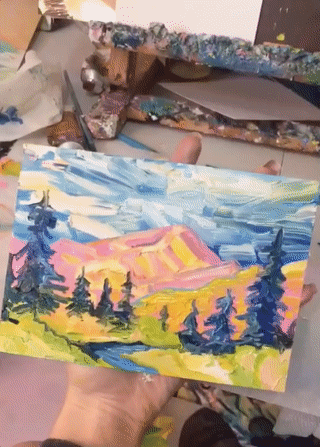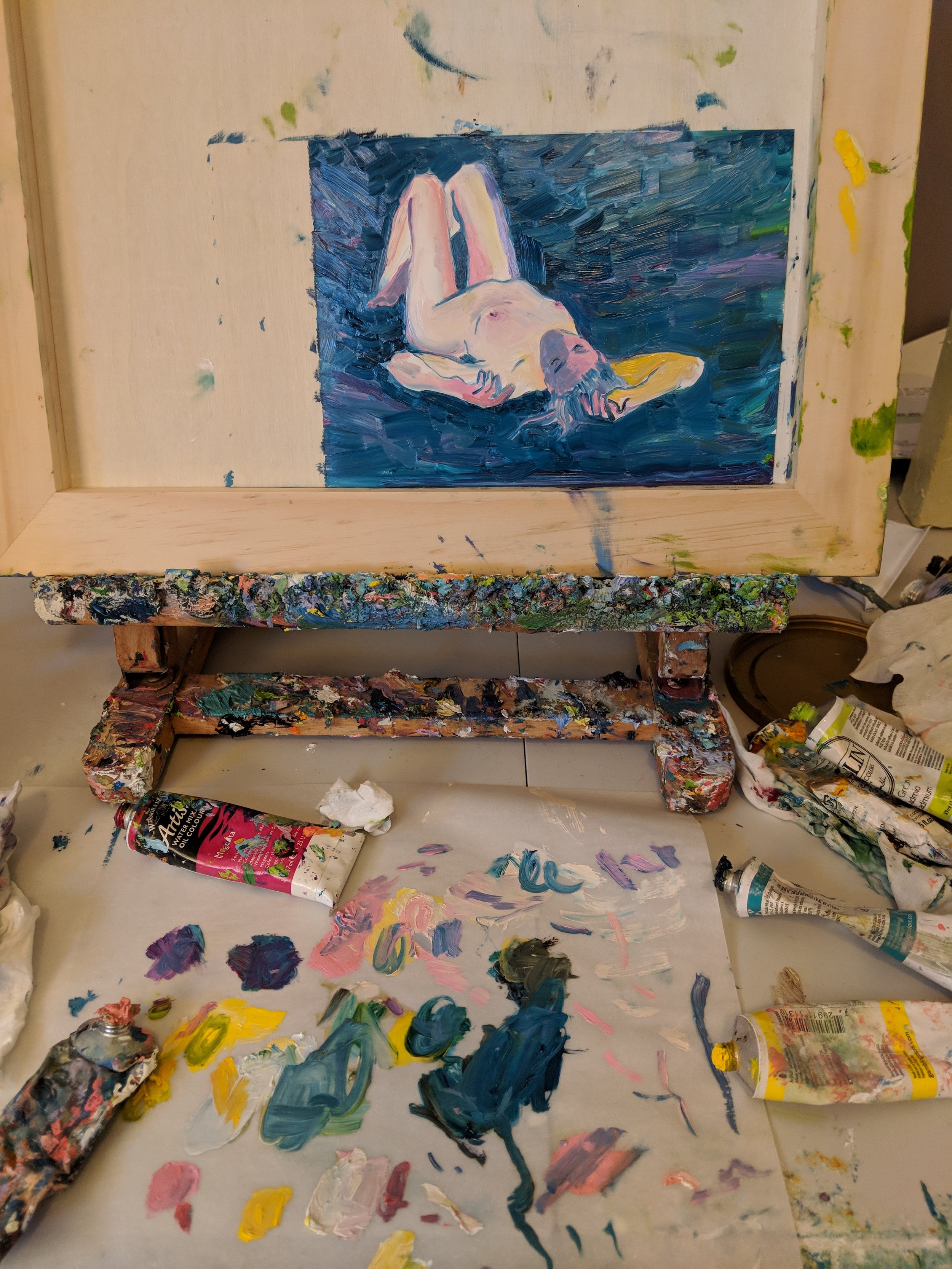On a total lark, I bought a sheaf of Yupo paper from the DickBlick store in Washington D.C. last spring. The ‘paper’ was unlike anything I’d ever seen.
Placing colors on Yupo is like putting the color in a vacuum - a color’s unfiltered brightness and truest essences emerge when on Yupo.
After working with Yupo for a while, you realize that it definitely isn’t paper in any sense - made of recycled plastic, it rebuffs water like a duck’s feathers. Colors don’t sink into it, they float on top of it, roiling softly, blending like a dream. It’s more like working on glass than paper or canvas. Think Bristol board but not made of trees. Like painting or drawing on Mylar, Yupo is extremely mutable. You can make a mistake in ink, and remove the mistake with a bit of rubbing alcohol.
Given all of this, I could see no reason why oils wouldn’t work on Yupo, where oil is like ink and turpentine works to erase like rubbing alcohol. That said, oil isn’t exactly advertised to work on Yupo - the Yupo pad itself states that the surface is great for watercolor, alcohol inks, and acrylics. No mention of oil paint anywhere.
I gave it a try, and spoiler, it’s amazing.
To get started with oils on Yupo I used Yupo Heavy (purple packaging) instead of the Yupo standard (orange packaging) paper. I tend to paint with heavy layers of thick oil paint and painting on anything less sturdy than card seemed unfair, or like it would end in disaster.
I hadn’t seen Yupo Heavy in stores until lately. (Sidenote our local art store in Hyattsville, Maryland is probably the most intimately-stocked store I’ve ever seen. I feel like this store knows my deepest desires, like it knows artists better than they know themselves. More on them soon)
To get oil to flow smoothly over Yupo, I wouldn’t recommend using anything heavy like linseed oil or stand oil. Winsor and Newton Liquin is the key:
Winsor and Newton Liquin medium
The painting above doesn’t even look like an oil painting, it’s more like a watercolor or acrylic ink at this point. Liquin makes layering easy and provides the mutability needed to make oil on Yupo work.
One part Liquin gives oil on Yupo a glassy, alcohol-ink-like feel, with all of the benefits of blending in oil. While Liquin makes oil paints a bit more like acrylics in that it speeds up drying time, it doesn’t dry so fast that you can’t go back and rework within 2 hours.
Without Liquin, oil paint can kind of get stuck on Yupo. It goes onto the Yupo and your brush just kind of sticks there - controlling it isn’t as easy.
I did not use Liquin in bulk on these paintings:
The first challenge is getting the Yupo paper onto an easel-like surface - since it is a sheet rather than a board, it’s a good idea to put the paper on a board or something like it. I used this wooden canvas backing as a support for the Yupo.
Without a decent amount of Liquin I had to keep brushstrokes shorter, and the model looks more like she was cut like a stone rather than flowing.
(Sidenote: the Android Google Pixel 2 camera is dope AF for taking photos of paintings and artwork. If things look a bit clearer above, this is why.)
I did like painting on smaller pieces of Yupo but for range, larger pieces (around 8 x 12 or so) work much better. It turns out you can get huge rolls of Yupo, similar to rolls of mylar, for larger work.
More oil on Yupo discoveries:
Will oil paint crack or split on Yupo once dry?
No, it bends as easily as the plastic it’s sitting on. Freezing weather would likely cause cracks, but that’s all I could think of. It’s been a few weeks since making my first painting on Yupo and it’s holding up beautifully.
Since plastic has extreme longevity (think of all the pictures of plastic in the ocean and its tendency to never biodegrade) oil paintings on Yupo could last for a long time. I don’t see yellowing as a problem, as long as the paint utilized is pretty good. I’ll get back to you in a couple years.
Does Yupo work for thick, heavy layers of paint?
The answer is YES, it works just fine and can support quite a lot of paint and impasto medium, up to about half a centimeter at highest. I’d recommend the Yupo heavy version for painting with thick paint.
The smaller Yupo surface worked well for experiments and compact painting, so I decided to branch out and try a larger size.
What else works on Yupo?
To be honest, just about anything. Watercolor pencil looks great, acrylic ink pours on and Yupo holds the color brilliantly. Copic markers work and since they are alcohol-based and the paper is smooth, they blend even more fluidly.
Related blogs:
First Yupo tries! https://www.beckyjewellart.com/blog/2018/1/6/medium-moment-yupo-paper







